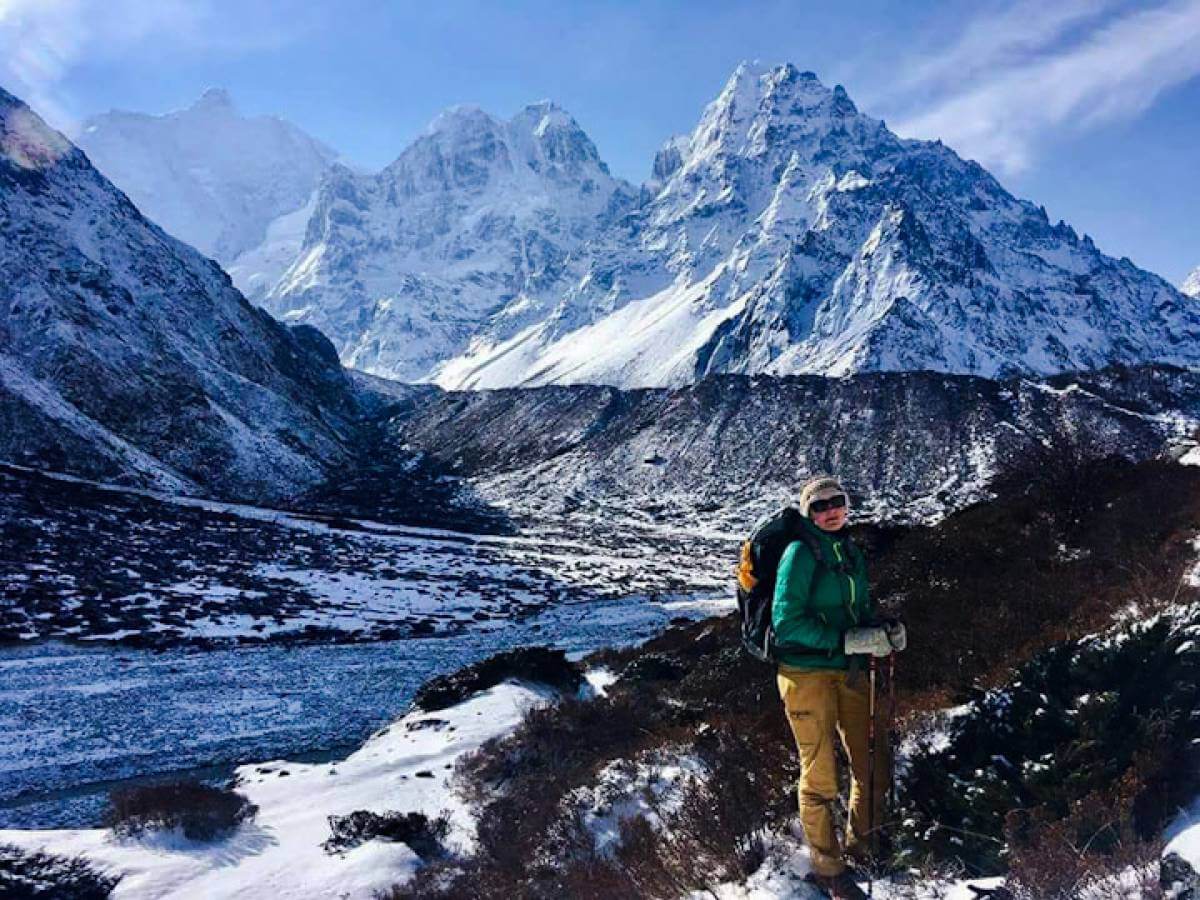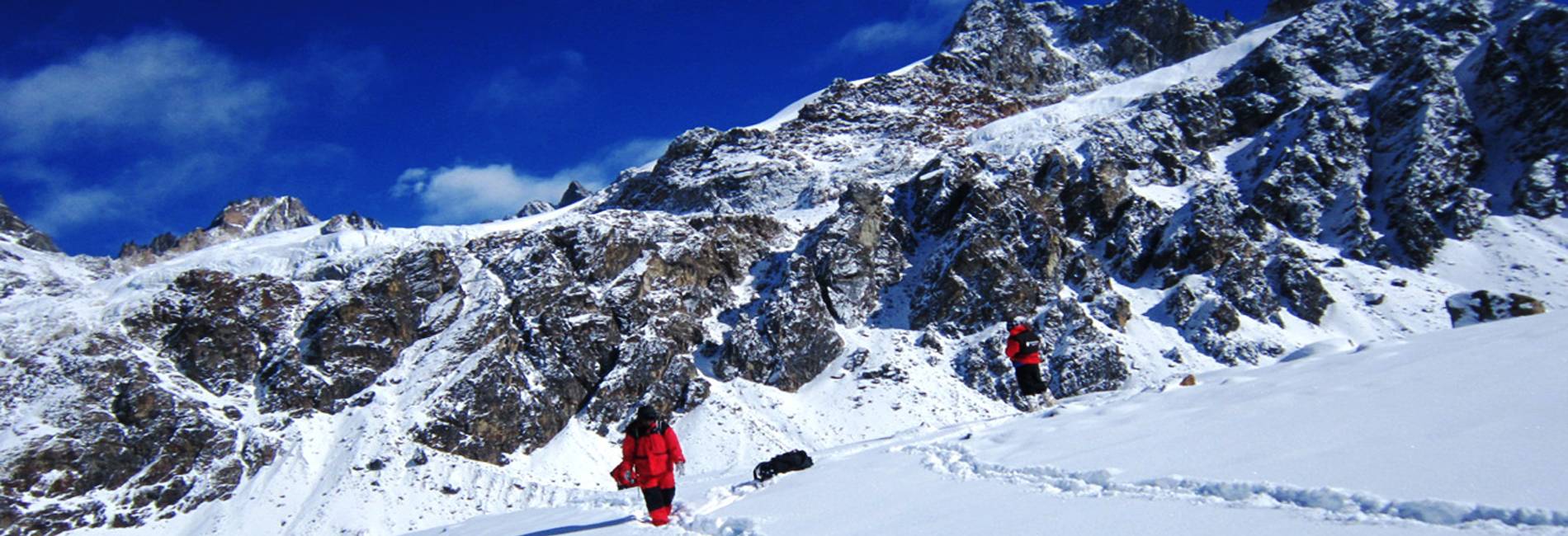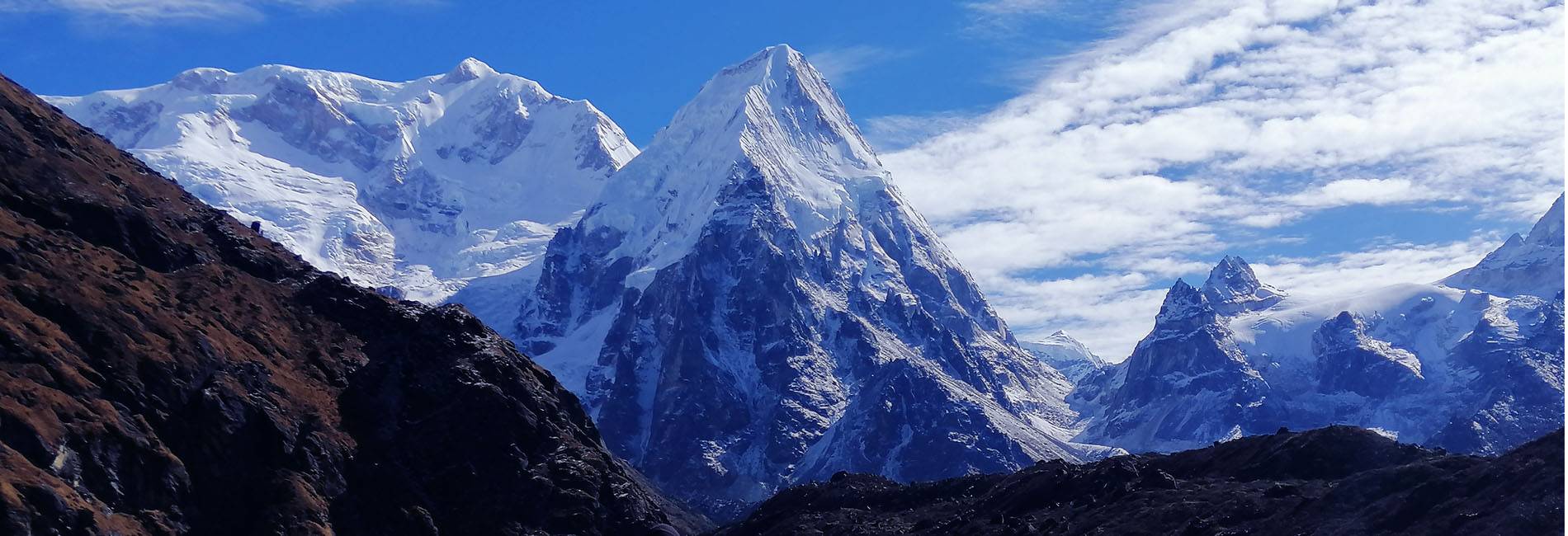26th August, 2025

Oct 01, 2022
A Complete Guideline to Kanchenjunga Base Camp Trek
Trekking in Nepal is generally great! However, trekking in the slope of Kanchenjunga, the third-highest mountain, (standing beautifully at the height of 8586m), is interesting and exotic. The foothills of Kanchenjunga have been opened to trekkers since 1988, but only possible to walk here as a part of an organized trek arranged through an agency, normally you need a local guide and at least 2 trekkers to purchase the required permits.
The Kanchenjunga area is mainly inhabited by the Limbu people, who speak a language related to Tibetan and follow a mixture of Buddhist, Hindu and animist beliefs.
Highlights of Kanchenjunga Base Camp Trek
Kanchenjunga, the third highest mountain in the world with five chaste of snow Kanchenjunga Trek offer expedition of north and south Base Camps.
Different adventure types experience of glacier treks rather than normal walk on trails in Yulung glacier during Kanchenjunga Trek.
Stunning view of Mt. Makalu fifth highest mountain in the world and east face of Mt. Everest during the Kanchenjunga Trek.
Pristine rhododendron forest, native vegetation, high alpine passes (Selele la, Mringla and Sinionla) and typical agriculture can be experienced during the trek.
Tibetan refugee settlements Camp on Kanchenjunga Trek routes along with ethnic cast and group of Nepal like Sherpa, Limbu, and Rai.

KANCHENJUNGA BASE CAMP TREK
If you have an adventurous spirit then this is the trek for you on the slopes of the world’s third-highest mountain (8586M) & to Kanchenjunga Base Camp. Kanchenjunga is situated between Nepal...
Kanchenjunga Base Camp Trek during a different season
Autumn season (September to November)
The autumn season is considered the best season for trekking in the Kanchenjunga region. The sparkling sun and crystal clear sky offer you the mesmerizing views of the mountains. You are much more likely to see the large numbers of trekkers traveling in this season compared to other seasons. The best part of this season is you don’t need to carry a heavy backpack.
Spring season (March to May)
Spring is another prime season for trekking that falls in the months of March, April, and May. The weather in this season is generally good, as temperature and climate tend to be more stable with mesmerizing views and skies are usually clear but there is a chance of a very low amount of rainfall, so you need to be prepared before embarking.
Monsoon season (June to Mid-September)
This Challenging trek pretty much challenges you especially in monsoon season, there is no permanent habitation beyond day five, and so, you should carry your own tent and food. Heavy rainfall and strong wind are to be expected and likely to create your trip more challenging. June to Mid September is considered as rainy months, trekking in rainy days adds more difficulties, there will be a lot of leeches, besides that trail can be slippery and landslide may occur at any time. Before heading makes sure to contact local people about the weather and the circumstances. It is better to prepare yourself prior to getting into poor morale.
Winter season (December to February)
Winter is not considered as a favorable trekking season. As you trek higher the temperature tends to decrease, some of the passes become impossible to pass due to strong wind, snow and slippery ice. We suggest you bring essential tools like snow boots, crampons which are necessarily important for your safe travel on snow and ice. Not to forget, carry warm and proper clothes to cope with the freezing temperature.
Level of difficulty during different seasons
Autumn Season
Autumn season itself is the peak season, suitable for all trekkers who are physically fit and having strong determination can accomplish this trek easily.
Due to the pleasant weather and blue skies, clear Himalayan views attract tourist to travel during this season, the mass flow of tourist happens to be, therefore, hotels and lodges may run out of rooms, pre-booking should be done.
Spring Season
You will encounter a number of trekkers along the way, might be crowded.
Anyone who can walk approximately 6-7 hours a day can easily accomplish KBC trek, no snow-falls and slippery roads make this trekking trail more favorable.
Prior booking is a must to eradicate the instance problem that may arise during the trek.

LUMBA SUMBA PASS TREK
An unearthly feeling of complete isolation in this remote and stunningly beautiful wilderness!The Lumba-Sumba trek is Nepal’s latest great escape into the wilderness of the Kanchenjunga Conservation A...
Monsoon Season
The gloomy weather obscures the view most of the time.
Check locally in case any trails have been affected by landslides.
But some trekkers tend to do KBC trek in monsoon just to see the greenery, mostly filled with lush green vegetation, flowers blooming and agricultural farming.
The rainfall happens mostly during the evening and night time, with clear sunshine during the morning, so it is not always raining.

KANCHENJUNGA CIRCUIT TREKKING
A remote trek to a mostly unexplored region” Kanchenjunga (8586m) is the world’s third-highest mountain and second highest in Nepal. This trek will take you into the wild along uncharted and less...
Winter Season
It is too difficult to trek in higher elevation due to the cold and heavy snow.
Heavy snowfall and slippery ice make this trek strenuous, contact with local and check the accommodation availability.
Essential tools, winter boots, crampons, necessarily important for safe travel on snow and ice
Most of the teahouses remain closed and you’ll barely see the trekkers along the way.
An unusual snowfall may block the trekking trails, choose the route wisely.
Cost of trekking Kanchenjunga Base Camp Trek
Keeping in mind people’s needs and requirements, we offer the best possible package with quality service. Sherpa Expedition And Trekking Company charges between USD 2500 to USD 3500 ensuring 100% departure and special group discount. A short costing listed below:
Kanchenjunga trekking permit cost
Kanchenjunga Conservation Area Project Permit Cost – USD 20 per person
Special Permit (Restricted Area) – USD 10, per person, per week
Guide and Porter cost
A professional, experienced and Government license holder trekking Guide – USD 35 per day
An experienced trekking porter – USD 30 per day
Transportation and flight cost
Bhadrapur to Suketar by local jeep (both way) – USD 20 per person
Bhadrapur to Suketar by private jeep (both way) – USD 180
Flight from Kathmandu to Bhadrapur (45 mins) (both way) – USD 350
Food and Accommodation
Food – USD 35 per day, because of its isolation and remoteness, the cost of food is generally expensive compared to trekking in other regions. It is hard to transport the supplies up here in higher elevation especially in remote areas like this. The only means of transport is mule and men himself so, the choices are limited.
Accommodation – USD 7 per day (The cost of twin sharing room)
Packing list for Kanchenjunga Base Camp Trek
The following information will generate you some ideas about what to bring for the trek as the proper trekking equipment and gears are equally important for a successful trip. KBC trek lies in a remote area, you might not find even basic things so, Sherpa Expedition and Trekking team highly recommend you to have all the necessary tools.
General
- Seasonable Sleeping bag and down Jacket (If you need it but has to be returned after the trek)
- Duffle bag (We will provide duffle bag during the trek Sherpa Expedition & Trekking need to be returned after the trek)
- A wind and waterproof thin layered jacket (Must have for morning and evening above 3,000m)
- Daypack
Upper Body- Head / Ears / Eyes
- A pair of half gloves
- The warmer hat that covers the ears
- Sunglasses
- Neck warmer
- Sunscreen (35 to 60 SPF)
- Headlamp and an extra set of batteries
Hand
- A pair of half gloves for walking poles(if you prefer)
- Warmer shell gloves and liner
- Center Body
- long sleeve t-shirts
- Thermal Tops
- wool Jackets or pullover
- Artificial sports bras for (Women and girls)
- Water and windproof shell jacket
Lower Body
- Thermal underwear (especially trousers)
- windproof and waterproof trousers
- warmer trouser
- Comfortable trekking pants
- Extra casual sport pants
Feet
- A pair of good waterproof trekking boots
- Pair of sandals
- 4-5 pairs of woolen socks
- Socks liner
- Light shoes and sneaker
- First Aid Kits and Medicines
- Assorted Adhesive Bandages (fabric preferred)
- Blister treatment
- Insect testing / anti-itch treatment
- Ibuprofen / other pain-relief medication
- Diamox (125mg to 250mg tablets for altitude sickness)
- Warps, splints, and wound coverings butterfly bandage
- Water purifying pills
(Note our company guide will carry the medicines and first aid kits during the trek. However, we recommend you to bring your personal first-aid kit as well)

21 DAYS KANCHENJUNGA CIRCUIT TREK
This 21 Days Kanchenjunga Circuit Trek is famous! Add this to your Nepal bucket—list of things to do. Magnificent snow-clad peaks, alpine crossings, lush green valleys, and raging rivers in one comple...
Miscellaneous, but must useable
- 4 passport sizes photo with original passport
- Water bottle & filter
- Flight details (please make a copy and leave one photo at our office in Kathmandu which may help, if you want to change your flight date)
- Bathroom kit (Toilet papers, hand wipes, towel, and soap, etc.)
Extra things
- Comfortable trekking poles
- Best energy dry foods (up to you)
- Power Bank and music players
- Camera (Memory card, chargers, and extra batteries)
At Last,
You will feel the path to be less used and non-touristy while embarking this challenging trek, choosing the right season makes your trip easier and you will encounter the unique plants and animals, if you are lucky, you might spot a glimpse of the elusive snow leopard, red panda, Himalayan black bear, and Assamese Macaque. Throughout the Kanchenjunga base camp trek, you get to bask in the full glory of the Himalayas – meandering through steep ridges, vast grasslands, and cultural diversity, consisting of Rai and Limbu ethnic groups.
If you are interested in trekking to Kanchenjunga Base Camp, please Contact Us
Any Questions? Let Us Know.
Recent Posts
17th June, 2025


















